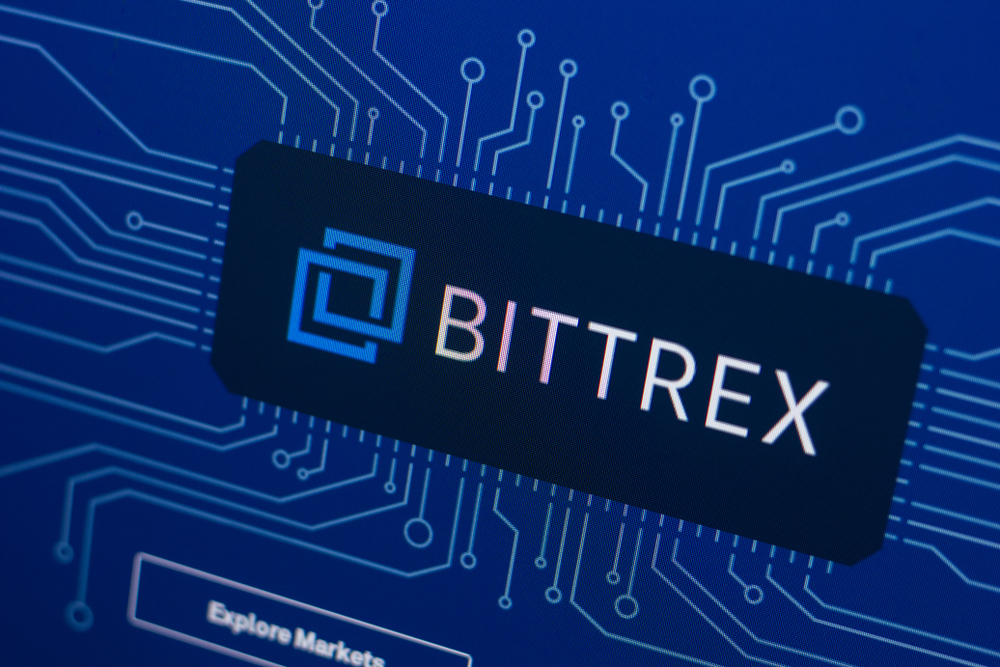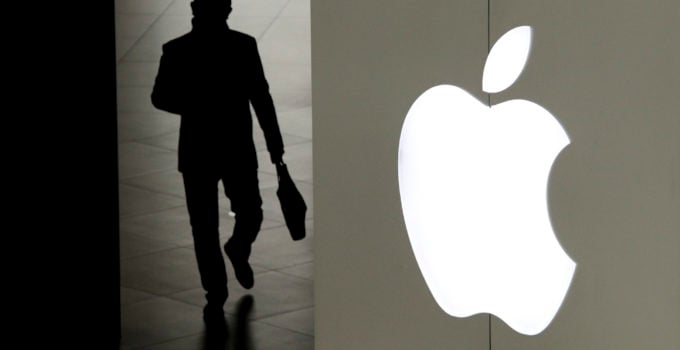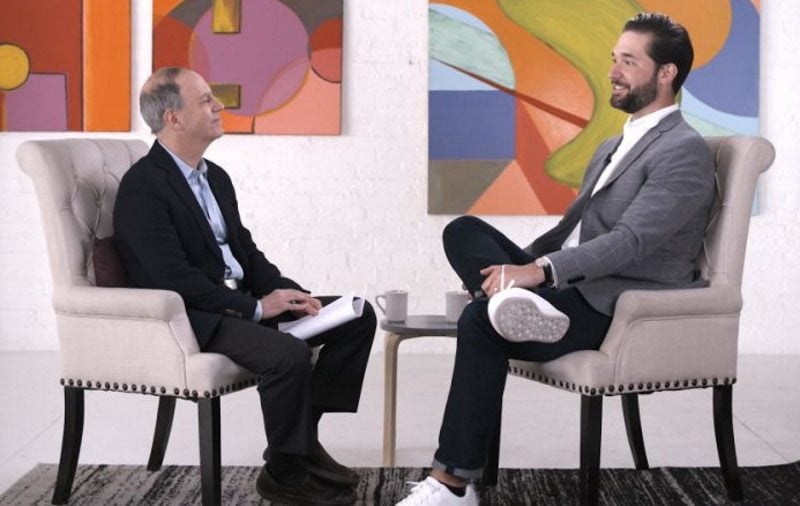Research: 75% of Bitcoin Exchanges Report ‘Suspicious’ Digital Currency Trading Volumes
Author: P. H. Madore / Source: CCN

A site called TheTie released a report today that estimates over 86% of all reported Bitcoin exchange volume is suspicious, while 75% of exchanges report extremely dubious volumes. The research uses a different formula than other reports have: it values each website’s visitors and compares that value to the reported figures.
Potential Fake Crypto Volumes High Across The Board

For example, Bithumb, which has been the subject of previous investigations, was expected to have a monthly volume of roughly $1.2 billion based on an average visit value of $13,418. Instead, Bithumb reports over $28 billion. This means their reported volume is nearly 2,000% higher than what would be expected.
TheTie introduces the data saying:
“The weighted average trading volume per web visit for Binance, Coinbase Pro, Gemini, Poloniex, and Kraken was selected as a baseline volume per user to calculate expected volume. This amounted to $591 per web visit. BitMEX was not included because it is a futures exchange. This does not account for mobile app or API usage to trade – web traffic is an assumption for simplicity. Relative outlier detection is quite notable, so the outright number isn’t the main objective.”
TheTie hedges its statements by saying these are “potential” indications of fake volume.
Altcoin Exchange Bittrex Among the Most Reliable Reporters

MIT Bitcoin Expo: Legislators Discuss Regulation, Potential of Blockchain Technology
Author: Michael Taiberg / Source: Bitcoin Magazine
Hyperbitcoinization enthusiast and writer

On March 9–10, 2019, the Massachusetts Institute of Technology hosted a two-day event, the MIT Bitcoin Expo 2019. Put together by the student-organized MIT Bitcoin Club, the conference welcomed more than just Bitcoin voices from every corner of the industry. One of those voices was that of U.S. Securities and Exchange Commission (SEC) Commissioner Hester Peirce.
Peirce sat down with Gary Gensler, ex-chairman of the Commodity Futures Trading Commission, senior lecturer at the MIT Sloan School of Management and senior advisor to the director of the MIT Media Lab, to discuss the progress of the SEC’s efforts to regulate the cryptocurrency industry. Notably, Gensler and Peirce launched into a discussion on what regulators can do better to protect investors from fraud and malicious actors.
Before the debate began, both Gensler and Peirce expressed their appreciation for the emerging technology. “It’s a new way to have tamper resistant data amongst the consensus of multiple parties,” Gensler said. “My research is mostly around the business of blockchain technology and … trying to find where are the real use cases where traditional data structures don’t work as well.”
Peirce expressed her own support for the space in relation to the SEC’s ongoing efforts to properly regulate it. “We have rules on the books that we have to enforce, but on the other hand, we don’t want to stop people from doing things that are going to make society a better place to live, that are going to make people’s lives easier, and enable people to interact in ways that they have not been able to in the past.”
Later in the presentation, the two veteran regulators went on to discuss what the government can do to protect investors by possibly regulatinged cryptocurrency exchanges.
Gensler believes that “exchanges are the gateway to get good public policy, particularly around AML laws, but also around investor protection.” He continued, “In essence, that there’s not a manipulated market with frontrunning and manipulation with the order books and the like.”
The discourse was...
Bitcoin Price Trapped in Key Make-or-Break Trading Range
Author: Omkar Godbole / Source: CoinDesk
View
- Bitcoin is trapped in a trading range defined by the 200-week simple moving average and the 200- week exponential moving average, currently at $3,404 and $4,106, respectively. Therefore, the outlook as per the weekly chart is neutral.
- A weekly close (Sunday, UTC) above $4,106 would confirm a longer-term bearish-to-bullish trend change and could fuel a rally toward $5,000.
- A weekly close (Sunday, UTC) below $3,404 could revive the sell-off from November highs above $6,500 and allow a drop to levels below $3,000.
- The odds of a drop to the lower edge of the trading range would improve if BTC invalidates a bullish candlestick pattern created on Feb. 27 with a move below $3,658.
Bitcoin is trapped in a key trading range defined by the 200-week simple moving average and the 200- week exponential moving average, currently at $3,404 and $4,106, respectively
The cryptocurrency needs a break above the upper edge needed to confirm a longer-term bull reversal. Conversely, a move below the lower bound of the range could revive the bear market.
Prices fell below the 200-week EMA in the third week of November, bolstering the bearish view put forward by the high-volume breach of the crucial support at $6,000 on Nov. 14.
The ensuing sell-off, however, ran out of...
Why Every Portfolio On The Planet Should Be Holding Bitcoin
Editor’s Note: Art Jonak is an investment analyst with both a wide and deep synthesis approach to research data. His commentary threads on titans like Netflix, Amazon and Facebook are a minor legend for their insight, detail and clarity. He also navigates venture funding, and emerging sector data, in a narrative, often with striking visualization, that reveals trends in their formation long before they are visible. It should not need to be said for investment disclosure that Art is holding crypto assets himself. He is obviously making a case of why everyone should.
Here is Art’s 2019 message thread for investing in Bitcoin, in particular. In our eyes, it slams the case for why every single portfolio on the planet should be holding Bitcoin, and treated as a portfolio asset class.
 Here's one case for why some should consider adding Bitcoin to their investment portfolio:
Here's one case for why some should consider adding Bitcoin to their investment portfolio:
* Bitcoin is a non-correlated asset — This is the holy grail of any portfolio. Bitcoin’s current 180 day correlation to the S&P 500 is 0 and the correlation to the dollar index is near zero as well. Investing in non-correlated assets should reduce the risk and increase the returns of a portfolio according to modern portfolio theory.
* Bitcoin has an asymmetric return profile — There is much more upside than downside in owning the asset. The downside (loss of capital) is capped at the total amount of capital invested, yet the upside is ~100X+ (if Bitcoin only becomes gold equivalent).
The modern portfolio theory argument for investing in Bitcoin is quite strong. But how has theory played out in practice?
Bitcoin has been the best performing asset over the last 10 years. It has experienced a 1,300,000X+ increase in value from $0.003 to ~$4,000 today. It has beat the S&P 500 for the last 10 years, the last 5 years, and the last 2 years. As a fixed supply asset, I believe Bitcoin will continue to outperform traditional assets in the future as demand continues to increase too.
Although I believe in Bitcoin’s future outlook, most people should not put significant funds at risk in this investment opportunity. It is risky and speculative. They could lose 100% of the money that they invest. For that reason, each person needs to evaluate their current situation, their goals, and the amount of capital they would be willing to lose.
If the thesis plays out how many smart people anticipate though, an investment of 100 basis points or less would materially change the performance of your portfolio fund, which ultimately changes the quality of life you will live when you retire. Most institutions have permanent, long-term capital which allows them to stomach more volatility than most investors.
For example, an investment of 1% of assets at $4,000 BTC price would yield a 25% increase in your portfolio total assets if Bitcoin reached $100,000. If you decided to invest 0.1% of assets, the same price appreciation would increase total assets by 2.5%.
However, the exciting part is that many people believe Bitcoin will not only reach $100,000 one day, but rather be worth $1,000,000+. If that comes to fruition, a 0.1% investment today could lead to the same 25% increase in total assets for your portfolio. These types of trade-offs are the definition of an asymmetric return profile.
And still, most people's portfolios have 0% exposure to Bitcoin and crypto. Something to consider as we head into 2019.
The Apple-Goldman Sachs Credit Card is a Poor Substitute for a Secure Bitcoin Wallet
Author: Wes Messamore / Source: CCN

The security design of bitcoin transactions already made the new Goldman Sachs and Apple credit card obsolete before it even came out.
Tripp Mickle, Liz Hoffman, and Peter Rudegeair reported for the Wall Street Journal Thursday:
“Apple Inc. and Goldman Sachs Group Inc. plan to start issuing this spring a joint credit card paired with new iPhone features that will help users manage their money.
“The card will be rolled out to employees for testing in the next few weeks and officially launch later this year, according to people familiar with the matter.”
The Verge’s Jon Porter writes:
“The main selling point of the card is expected to be deeper integration with the Apple Wallet app, which will allow users to manage balances and set spending goals.”
Someone Tell Apple: Credit Cards Are Very Stupid

I’ve always marveled that we hand our credit card or debit card to teenagers at restaurants to disappear with for a few minutes, with all the information on it to spend your money.
We tell total strangers over the phone our name, credit card number, its expiration date, and the super special three number security code on the back to have a pizza delivered.
This is insane.
It does show how trustworthy the people in our society generally are that a financial payment system whose security design is so broken hangs together as well as it does.
But this is a big planet, and there are a lot of people. Not all of them are honorable or trustworthy. Companies...
Virginia Police Department Pension Fund is Betting on Bitcoin
Author: P. H. Madore / Source: CCN

Fairfax County, Virginia has targeted part of its pension fund toward investments in the Bitcoin and cryptocurrency industry, as well as blockchain technology in general. Now, they’re explaining why.
Fairfax County Retirement Systems Director Jeff Weiler published a post in response to CCN and other media’s reporting on the county’s decision to invest in Morgan Creek’s latest offering, the Blockchain Opportunities Fund. Oversubscribed from its intended $25 million, the fund invests in blockchain companies. It captured $40 million from two Fairfax County pension plans and other institutions.
Less Than 1% Of Two Retirement Funds Allocated to Crypto Ventures

First things first, the post gives specifics about the amounts invested. In total, the Virginia retirement system dumped $21 million into the fund. $10 million is from the county employee’s retirement fund while $11 million is from the police officer’s fund. They represent 0.3% and 0.8% of the funds’ total assets, respectively.
The post’s intention is to assuage any concerns that might have arisen in the minds of retirees. As CCN clearly stated, the play was not strictly a Bitcoin buy. Instead, Morgan Creek will use the fund to invest in blockchain companies like Coinbase and Bakkt,...
Reddit Founder Alexis Ohanian says "Bitcoin winter is great for crypto industry"
Cryptocurrency investors “should have been thinking long term,” says Reddit cofounder and Coinbase backer Alexis Ohanian.
Alexis Ohanian, co-founder of Reddit and known crypto bull, claimed that the crypto hype is gone, leaving space for true crypto believers. Ohanian spoke on the subject in an interview with YahooFinance released on Feb. 22.
Alexis Ohanian Sr. (u/kn0thing) - Redditt
Alexis Ohanian Sr. - alexisohanian.com
Author: Samantha Chang / Source: CCN

Bitcoin investors should not be discouraged by the brutal Crypto Winter because the mass purge is actually good for the long-term health of the industry. That’s the observation of Coinbase investor Alexis Ohanian, better known as the founder of social media network Reddit.
‘This Is the Spring of Crypto Innovation’
Ohanian — the husband of American tennis star Serena Williams — admits that bitcoin is experiencing a prolonged market slump.
However, despite the Crypto Winter, he says now is actually the “spring of crypto innovation.” Why? Because the people that remain in the industry after the market crash are die-hard enthusiasts, not flaky, fair-weather speculators.
“This is the Crypto Winter, no doubt,” Ohanian told Yahoo. “But a friend of mine, Brian Armstrong — who’s the CEO of Coinbase — said, ‘This is the spring of crypto innovation.'”
“What he means is, ‘Yes, the prices are depressed. The speculators have fled, and that’s great.’ Because the people who are now building on crypto are true believers. They’re actually building the infrastructure that it’s going to take to really make this happen.”

Market Attrition Reveals the True Believers
While naysayers point to the market slump as evidence that bitcoin is dead, Ohanian says nothing could be further from the truth.”
“Some of the smartest people I know in tech are still working on solving these problems. They’re building companies that are built on blockchain.”
“The hype is...
‘Bull Cross’ Points to Positive Bitcoin Market Shift
Author: Omkar Godbole / Source: CoinDesk
View
- Bitcoin’s three-day chart is showing a bullish crossover of the 5- and 10-day exponential moving averages for the first time since July. The crossover looks decisive as both EMAs are now trending north, validating the bearish-to-bullish trend change signaled by the high-volume triangle breakout seen on the 3-day chart.
- The cryptocurrency could test December highs above $4,200 in the near term.
- A minor pullback to $3,800 may be seen in the next 24 hours, as signs of bullish exhaustion have emerged on the hourly and 4-hour charts.
- The bullish case would weaken if BTC finds acceptance below $3,614 (the low of the previous three-day candle), but that currently looks unlikely.
A much-followed bitcoin (BTC) price indicator has turned bullish for the first time in seven months, indicating a trend change in the market.
On the three-day chart, the 5-candle exponential moving average (EMA) has crossed the 10-candle EMA from below – the first decisive bullish crossover since July 17, 2018.
Back then, BTC was trading above $7,300 and the crossover was followed by a rally to highs above $8,400 on July 24.
Moving average crossovers help identify shifts in momentum. A bearish-to-bullish trend change is confirmed when a short-term moving average crosses through a long-term average from below.
Many would argue that EMA crossovers are lagging indicators. While that is true, crossovers between the short duration averages help traders distinguish between bullish and bearish scenarios. The long-term MA crossovers like the “golden cross” (bullish crossover of the...
Bitcoin (BTC) transaction average & median fees
Author: Peter Ryan / Source: CoinDesk
Transaction fees make the bitcoin blockchain go round. The miners are compensated for their efforts, not only through inflationary block rewards but also through fees charged to users for adding their transaction to blocks. While fees on average make up about 4% of the total miner revenue per day, with the lion’s share coming from block rewards, sometimes economic shocks cause those fees to rise.

The average fee per transaction is approximately $1.63 with the median being $0.88 over the past five years. The fees are the prices charged for a transaction to get into the limited space of a 1 MB block that occurs every 10 minutes. This results in about 1,800 transactions (~556 average transaction size in bytes) that are able to fit into a block. If the standard 144 blocks are mined per day, we observe a ceiling of about 260,000 transactions per day. Thus there is always a backlog of unconfirmed transactions that reside in the mempool awaiting miners to select them for inclusion in the blockchain.

According to Blockchain.Info, there are about 3.4 million bytes awaiting inclusion in the mempool. Miners will usually include the transaction with the highest fees and work their way down as capacity dwindles to the lower fee transactions. Imagine you are commuting to work and...
How hackers can be stopped from Splitting Bitcoin Into 2 with SABRE Tech
If hackers felt like it, they could split bitcoin in two.
Author: Alyssa Hertig / Source: CoinDesk
It wouldn’t even be that hard, according to research from 2017. Thanks to insecure technology underpinning the internet, someone with the right credentials could exploit the Border Gateway Protocol (BGP) by faking their identity and confusing the network into sending floods of data somewhere it shouldn’t. “The internet’s biggest security hole,” as it’s been called, has been used for everything from snooping on government emails to stealing cryptocurrency.
As far as splitting bitcoin, the attack is as bad as it sounds. If executed successfully, one chunk of the network would be completely sliced off from the other. No one could communicate and send transactions to people who are a part of the “other” network.
That’s where researchers from the prestigious Swiss university ETH Zurich hope to help. As described in a new white paper, they’ve invented a relay network called SABRE that they hope will one day be built on top of bitcoin.
With the same name as the curved blade common in the Napoleonic era, SABRE sounds like it would be used to slice bitcoin in half. Instead, it hopes to do the opposite. Rather, the planned network would (metaphorically) wield a saber against impending attackers, stopping them in their tracks.
Eth Zurich computer network researcher Maria Apostolaki told CoinDesk:
“SABRE is a small relay network whose nodes are strategically located such that they remain connected to each other and connected to as many regular nodes as possible, even in the presence of a AS-level adversary that hijacks traffic.”
This network would “render the partition ineffective,” she said.
When SABRE is used, the risk of a split goes down, the researchers claim. Without SABRE, it’s possible for an ISP to attack and partition bitcoin with only a “small” routing attack. But, according to the researchers’ simulations on a group of five nodes, there’s only a 3.1 percent chance probability of the attacker could hijack the network and partition it. The probability also decreases as the number of nodes increases.
To be presented at The Network and Distributed System Security Symposium this month, the proposed layer is the result of years of research. Apostolaki has been researching this specific issue since 2016 since “blockchain applications are very common nowadays making research on their routing characteristics very impactful.”
The attack
The attack strikes at the root of the internet.
Every time you click a webpage, you’re unknowingly using BGP, an internet protocol that helps get data from Point A to Point B. Say you want to get to CoinDesk.com. Your...











